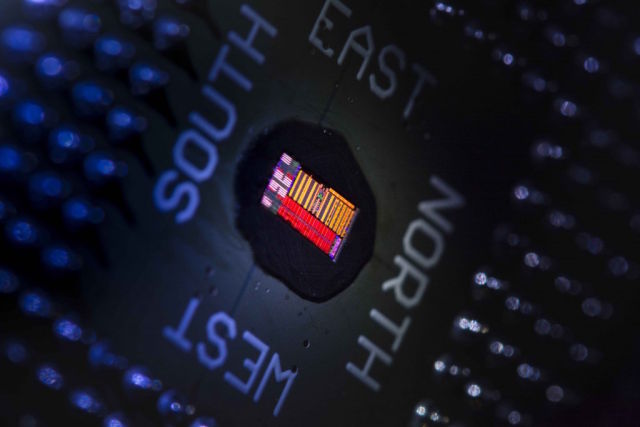Progress! New CMOS chip can process both light and electricity
Ars Technica 2015-12-23

(credit: Glenn Asakawa, University of Colorado)
Moving data around inside a computer means shoving it through wires, which have inherent bandwidth limitations and produce a lot of heat. Once that data hits a network, however, it often runs across optical hardware, which can send information long distances at high bandwidth without needing a dedicated nuclear reactor for power.
The contrast between the two methods has most companies thinking about ways of getting optical connections inside computers and, eventually, inside chips themselves. This poses a significant challenge. While it's possible to use silicon to create light-handling features, the processes used to do so are incompatible with the CMOS techniques used to make circuitry. As a result, most efforts in this area have used separate chips: one for the processor, one for the optical interconnect.
Now, a research team has put together a single chip that handles both optical and electrical processing, and which uses an optical connection to its main memory. While the bandwidth remains low, the entire system was manufactured using standard CMOS processes. And it incorporates a small RISC processor that's able to run standard text and graphical programs.